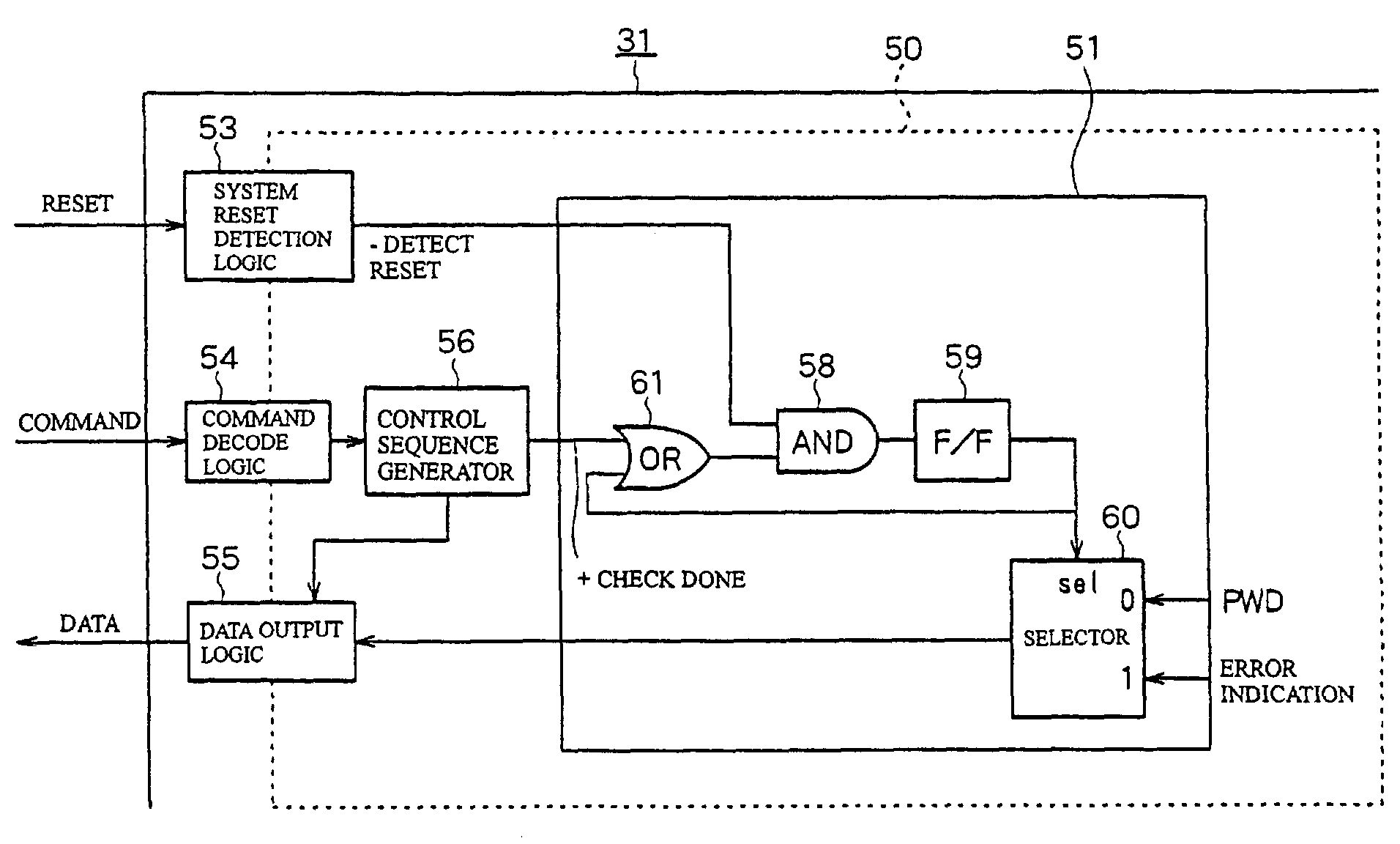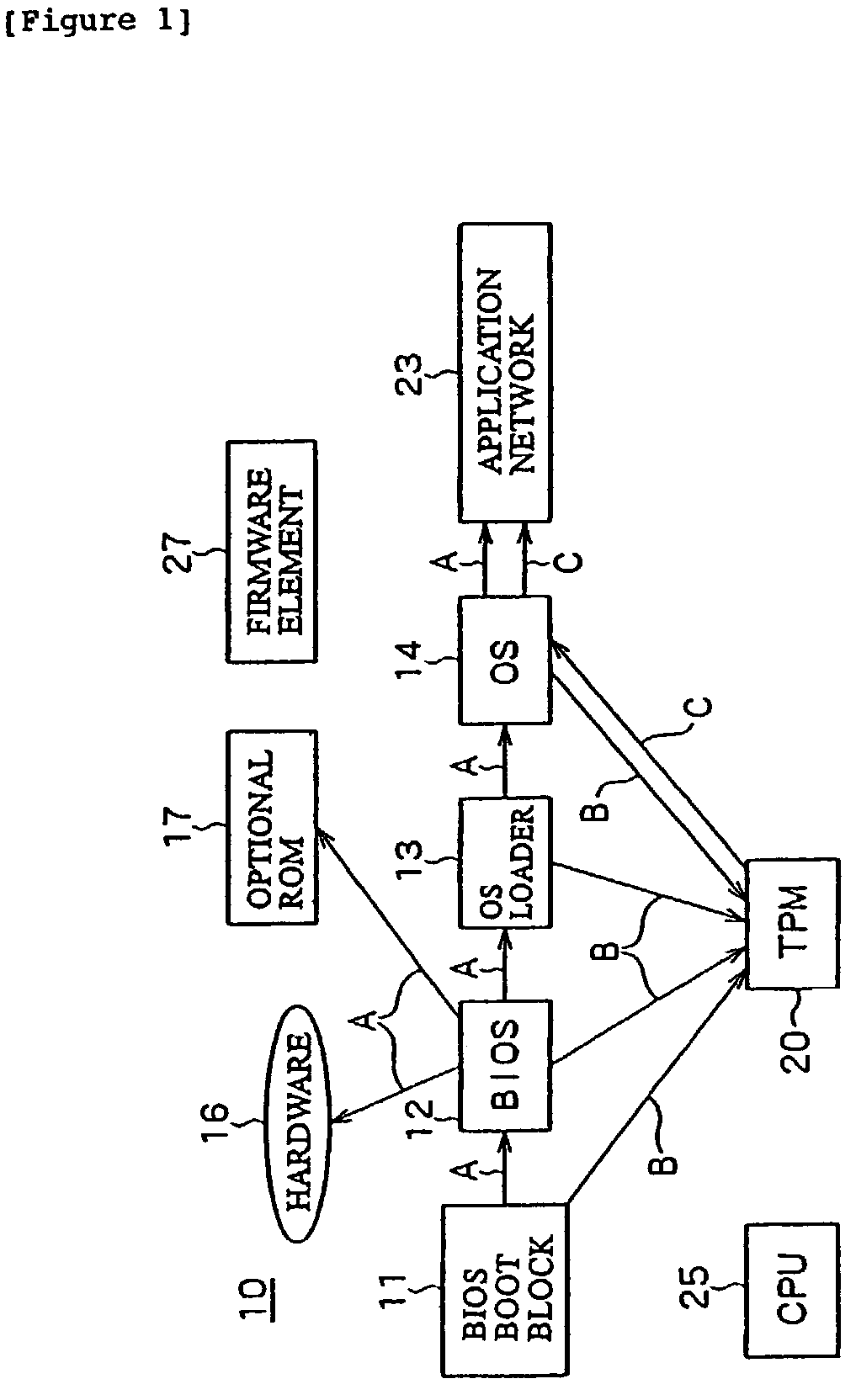Authentication system and method
a technology of authentication system and authentication method, applied in the field of electric devices, can solve the problems of inability of processors to read the firmware program code, inability to use the value of the hash function for authentication, and the inability of the processor to execute the os to read the code of the firmware program, etc., and achieve the effect of reducing risk
- Summary
- Abstract
- Description
- Claims
- Application Information
AI Technical Summary
Benefits of technology
Problems solved by technology
Method used
Image
Examples
Embodiment Construction
[0046]Now, embodiments of the invention will be described with reference to the drawings.
[0047]FIG. 1 describes integrity measurement in an application of TCPA (Trusted Computing Platform Alliance: an open standard for trust and security of computer platforms) to a PC (Personal Computer) 10. In FIG. 1, reference character A denotes authentication measurement, reference character B denotes storage of the authentication result, and reference character C denotes reporting. When a system reset is generated such as at power-on, boot-up starts. During the boot-up, a BIOS boot block 11, a BIOS 12, an OS loader 13, and an OS 14 are executed in this order. The chain of reading and executing the BIOS boot block 11, the BIOS 12, the OS loader 13, and the OS 14 is also the chain of authentication. Each program is authenticated by the preceding authenticated program and then determines whether to authenticate the program that is read next. That is, the BIOS 12, the OS loader 13, and the OS 14 ar...
PUM
 Login to View More
Login to View More Abstract
Description
Claims
Application Information
 Login to View More
Login to View More - R&D
- Intellectual Property
- Life Sciences
- Materials
- Tech Scout
- Unparalleled Data Quality
- Higher Quality Content
- 60% Fewer Hallucinations
Browse by: Latest US Patents, China's latest patents, Technical Efficacy Thesaurus, Application Domain, Technology Topic, Popular Technical Reports.
© 2025 PatSnap. All rights reserved.Legal|Privacy policy|Modern Slavery Act Transparency Statement|Sitemap|About US| Contact US: help@patsnap.com



